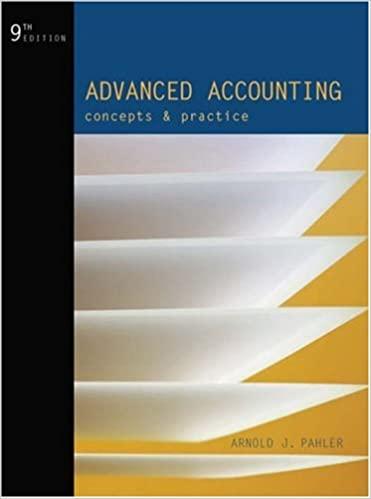Variable Interest Entities Entity A, Entity B, and Entity C each have a variable interest in Vixco,
Question:
Variable Interest Entities Entity A, Entity B, and Entity C each have a variable interest in Vixco, a variable interest entity. Their respective interests in Vixco’s expected residual returns and expected losses are 45%, 30%, and 25%.
Which entity must consolidate Vixco?
C 3-1 Partially Owned Subsidiaries: “If I Made the Rules” Pax Inc. owns 51% of the outstanding com¬
mon stock of Sax Inc. Rax Inc. owns the other 49% of Sax. The separate company income state¬
ments for 2006, excluding any income recorded under the equity or cost methods, follow (in thou¬ sands):
Pax Inc. Rax Inc. Sax Inc.
Revenues . $ 2,000 $ 2,000 $ 300 Costs and expenses . (1,800) (1,800) (200)
Net Income . $ 200 $ 200 $ 100 Required 1 Show the four possible manners of reporting that Pax could use to present its 2006 income statement to its shareholders.
2 Repeat requirement 1 for Rax.
3 If you were one of the seven FASB members, for which manner of reporting would you vote? Why?
C 3-2 Rules or Judgment: Which is Better? The accounting standards setters continually face the issue of whether to include detailed rules in their standards or to allow companies and their outside au¬
ditors to use judgment. Such is the case in the issue of whether an entity should be consolidated.
Required 1 What are the arguments for allowing judgment?
2 What are the arguments for having detailed rules?
What has been the direction of the standards setters in this respect since the FASB’s establish¬
ment in 1973? Why do you think this is so?
Step by Step Answer:






